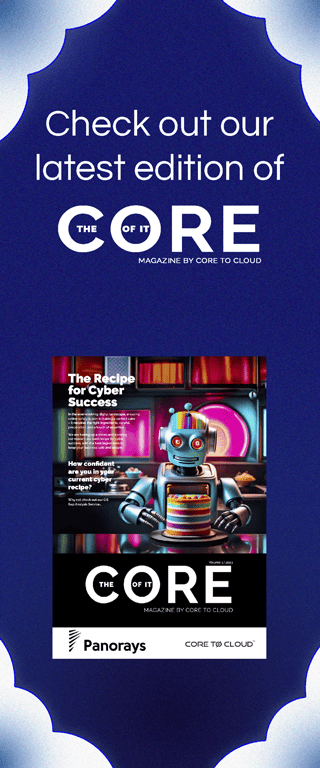It is time to talk….
As a warning, this may contain themes that are triggering for some individuals.
Mental Health has been a focus for many organisations for the past few years, especially since the impacts of COVID are still causing many problems for individuals. This positive turn in the mindset of businesses in regards to acknowledging mental health and allowing it to be a focus still isn’t enough and at Core to Cloud we want to highlight why.
Let’s look at the data
According to WHO, suicides in men are almost twice as high compared to females, with 12.6 within every 100,000 individuals. Take a moment to think about that number, let it sink in, because this is the number we want to lower as a sector.
Our sector - cyber security, is also a sector that can negatively impact an individual's mental health, and statistically, our sector is a male-dominated role (even though we are making waves within this area!) which can contribute to this high rate of suicide alongside other sectors with this type of gender disparity.
Several issues can impact mental health for men within technology sectors such as cybersecurity:
High-pressure work environments
Cybersecurity is a high-pressure field that requires constant vigilance and attention to detail. Men in cybersecurity may experience stress, burnout, and anxiety due to the demanding nature of their work. There is a lot of responsibility within these types of roles that can create a negative impact if not supported or dealt with correctly.
Social isolation
Men within cybersecurity often work long hours, sometimes alone or in small teams. This isolation can lead to feelings of loneliness and depression. A computer is not the best teammate, nor are the additional monitors that burden our desks.
The stigma around mental health
There is still a stigma attached to mental health in many workplaces, including technology sectors. Men may feel reluctant to seek help for fear of being seen as weak or vulnerable. This can cause huge delays in an individual asking for help or reaching out to their team members, compounding these negative feelings that they may encounter.
Exposure to traumatic content
Cybersecurity professionals are often exposed to traumatic content, such as images of child abuse or terrorist activity. This exposure can have a profound impact on their mental health. Also, the intensity of cyber attacks and threats can cause an individual to feel fatigued and worn out over time.
This is just the beginning of the issues faced within these roles in some organisations.
So how can we begin to make a difference from an organisational level?
Encourage open communication
Organisations can encourage open communication by creating a safe and supportive environment for employees to discuss mental health issues. This can include regular check-ins with employees, providing opportunities for feedback and input, and promoting a culture of openness and transparency.
This goes above and beyond a quick, hi how are you? This is a strategic plan to ensure that an individual can air their concerns and discuss how they are feeling without fear.
Address trauma exposure
Organisations can provide support for employees who are exposed to traumatic content as part of their work. This can involve providing access to counselling or other resources to help employees cope with the emotional impact of their work.
A debrief is also a great opportunity for teams who have experienced a cyber security threat or issue to ensure that they feel heard and understood, which is separate from the technical issues or their processes.
Support work-life balance
Organisations can support work-life balance by offering flexible work arrangements, such as hybrid or flexible schedules. This can help employees manage their workload and reduce stress. The changes to our work environments during the pandemic showed us that we can work efficiently within a hybrid setting.
We know, these may sound simple to create and implement, but they need to have a clear focus and be updated regularly to ensure they are as effective as they possibly can be in supporting men within these types of roles and the mental health issues they face.
Why is it important that we all work together on this?
Simply put, we all can make a difference within this statistic. If we all had more knowledge about mental health or didn't fear the repercussions of expressing how we felt then we would be able to lower this number.
If organisations added processes and resources to individuals within this type of role that supported their mental health then we would be able to lower this number.
If individuals had a space to express their concerns or worries and could access support quickly and efficiently, we would then be able to lower this number.
We all have a role to play in ensuring that as we move forward within our sector we protect those that have built it and paved the way for us to innovate. If you would like to contact Stress to receive support with your mental health contact them directly.
At Core to Cloud we are working on ensuring that we are supporting all of the men within our organisation, and we would love to share with you how we are doing this to see how we can improve and to inspire you as well.















